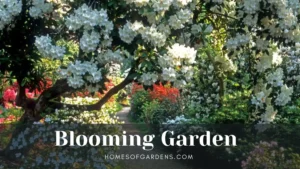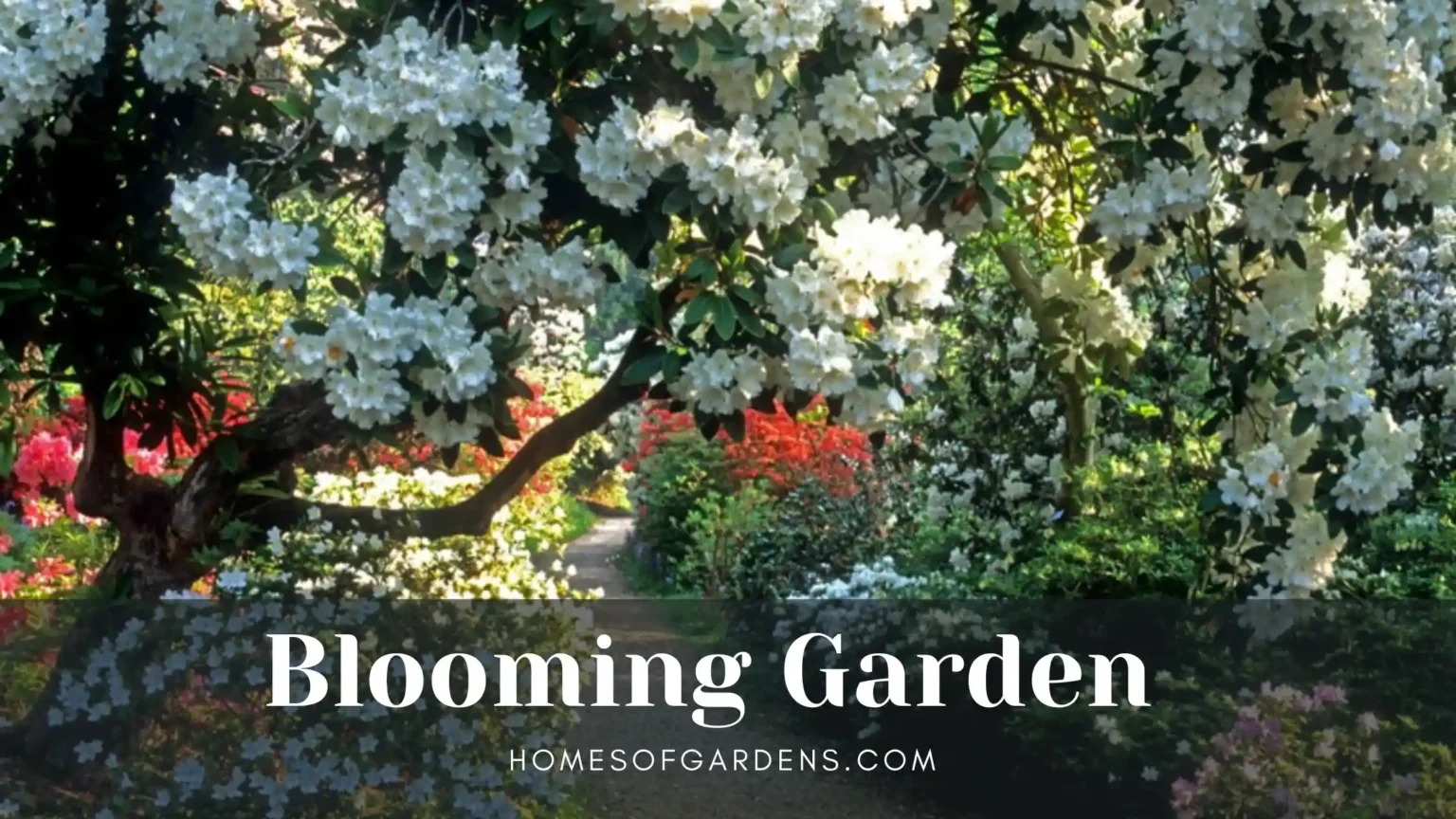A garden that is blooming is not just an assortment of plants. It’s a living work of art that brings life in color, beauty, and peace to any room. If you have a large backyard, a small patio, or even a few pots on your balcony, creating a lush garden can be a rewarding experience that lets you connect with the natural world. Beyond its aesthetic attractiveness, a well-managed garden can provide mental peace as well as environmental benefits and even a feeling of achievement.
We’ll look at the fundamentals of maintaining an attractive garden starting with selecting the best plants to ensure their health all through the seasons. No matter if you’re an experienced gardener or are a novice with a new passion, these suggestions can help you create an attractive outdoor space.
Foundation of a Blooming Garden
Every garden that is successful starts with a healthy soil. The soil that is well-drained and rich in nutrients provides the essential nutrients needed to allow plants to develop and flourish. Before planting, determine the pH of your soil and its composition. Most flowering plants like mildly acidic soils to neutral ones (pH 6.0-7.0). If the soil you have is heavy or sandy, you can amend the soil with organic matter such as peat moss, compost, or manure that has been aged to improve the texture and fertility.
Proper preparation includes selecting the best place to plant. The majority of flowering plants require at least six hours of sun every day, although some varieties that love shade like hostas and impatiens do better in less. Pay attention to the patterns of sunlight in your garden and select the plants that are suitable to ensure they have the right conditions to grow.
Selecting the Right Plants for Continuous Blooms
A garden that is truly flowering isn’t just about one flower, it’s about sustaining beauty throughout the year. In order to achieve this, mix an assortment of perennials, annuals and flowering shrubs that bloom at different times of the year.
- Spring Bloomers: Tulips, daffodils, and hyacinths bring early color, while peonies and lilacs add fragrance and vibrancy as the season progresses.
- Summer Stars: Roses, daylilies, and lavender thrive in the heat, while zinnias and marigolds provide long-lasting, drought-resistant blooms.
- Fall Favorites: Chrysanthemums, asters, and sedum extend the garden’s life into autumn with rich, warm hues.
- Winter Interest: Evergreens, holly, and winter-blooming camellias keep the garden lively even in colder months.
If you carefully plan your plant choices You can be sure that your garden will remain a lively and ever-changing showcase of the beauty of nature.
Watering Wisely for Optimal Growth
Water is vital to ensure a beautiful garden, but insufficient irrigation can cause fungal diseases, root rot or drought stress. The key is to use deep regular watering instead of frequent, shallow sprinkles. The best time to water is in the early morning. time to water plants, allowing them to absorb water before the sun’s heat while reducing the rate of evaporation.
Drip irrigation or soaker hoses work great for getting water directly to roots which reduces waste and helps prevent plant diseases. Mulching with organic materials such as straw or wood chips aids in retaining moisture, regulates the temperature of the soil, and controls the growth of weeds.
Feeding Your Garden for Maximum Blooms
As with humans, plants require adequate nutrition to thrive. Although a healthy soil can provide an excellent base, flowering plants usually benefit from feeding. A slow-release fertilizer that is balanced and well-balanced (such as a 10-10-10 formula for NPK) applied in the early spring encourages vigorous growth. For large bloomers such as dahlias and roses, a fertilizer rich in phosphorus can encourage blooms that are prolific.
Organic alternatives like the compost tea as well as bone meal, are fantastic alternatives for gardeners looking for organic solutions. Be careful not to over-fertilize, as too much nitrogen can result in dense foliage and a decrease in flowers.
Pruning and Deadheading: Encouraging More Flowers
Pruning doesn’t only focus on shaping plants, it’s about promoting new growth and extending the time of blooming. Deadheading (removing blooms that are no longer in use) can redirect the plant’s energy from the production of seeds to the new flowers. Geraniums, roses, and petunias in particular benefit from regular deadheading.
For perennials and shrubs cutting back at the wrong time improves the circulation of air and helps prevent diseases. In the late winter or early spring, it is the best time to trim flowering shrubs. Summer-blooming plants like hydrangeas could require pruning after flowering.
Pest and Disease Management
The blooming of your garden may attract unwanted guests like aphids, snails, and fungal infections. Instead of relying on harmful chemicals, think about integrated control of pests (IPM) techniques:
- Companion Planting: Marigolds repel nematodes, while basil deters mosquitoes and flies.
- Natural Predators: Encourage ladybugs, lacewings, and birds that feed on harmful insects.
- Organic Treatments: Neem oil, insecticidal soap, and diatomaceous earth effectively control pests without harming beneficial insects.
Monitoring your plants regularly for warning signs of trouble will allow for quick intervention to keep your garden well-groomed and healthy.
Creating a Garden That Appeals to the Senses
A flowering garden is an indulgence for the senses. Use fragrant flowers like gardenias, jasmine or sweet peas that will delight the senses. Textural contrasts, such as gentleness of a lamb’s ears against the sharp salvia blooms–provide both tactile and visual interest.
A water feature, such as the small birdbath or fountain creates calming sound and attracts wildlife. Wind chimes and ornamental grasses which rustle in the breeze can further enhance the experience.
Sustainable Gardening Practices
A garden that is truly flourishing is one that flourishes in harmony with nature. Think about these eco-friendly methods:
- Rainwater Harvesting: Collecting rainwater reduces dependency on treated water.
- Native Plants: Species adapted to your region require less water and maintenance.
- Pollinator-Friendly Choices: Planting bee- and butterfly-friendly flowers supports local ecosystems.
When you implement sustainable methods gardening becomes more than just a private retreat, but an asset to the environment’s health.
The Emotional Rewards of a Blooming Garden
Beyond the aesthetics , gardening can provide profound emotional benefits. Being a gardener helps reduce stress, promotes the mind, and creates an inner sense of purpose. Watching the seeds germinate blossom, buds grow and blossoming flowers is an extremely satisfying moment that enables us to connect with the natural rhythms.
You may be looking for a serene escape, a creative outlet or even a way to increase aesthetics, a flowering garden can bring endless happiness.
Final Thoughts: Your Personal Paradise Awaits
Making a beautiful garden is a process of patience as well as learning and enjoyment. With the proper preparation along with the proper selection of plants, and proper care the outdoor space you have created will transform into an enthralling landscape that changes according to the season. The beauty of every flower is testimony to your devotion. It’s a living work of art that adds elegance to your home and the surrounding world.
Grab your gloves, grab an axe, and begin the planting. Your blooming garden awaits!

